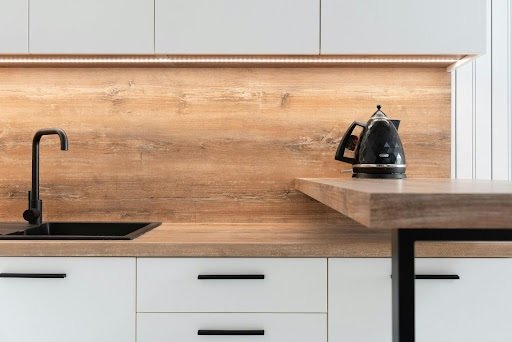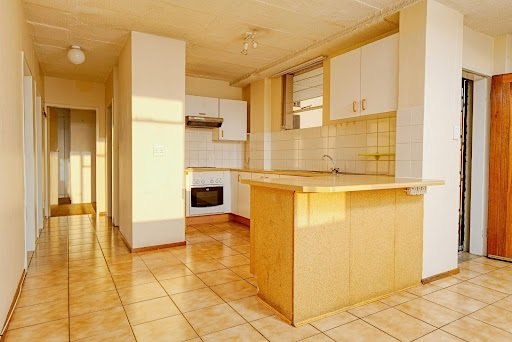In today’s ever-evolving family dynamics, multigenerational living has become increasingly popular. Families are opting to live together under one roof, accommodating elderly parents, young children, or other relatives. The kitchen, often referred to as the heart of the home, plays a significant role in such living arrangements. A well-designed kitchen can enhance the functionality, comfort, and convenience of a multigenerational household. This article delves into essential design tips and considerations for remodeling a kitchen to cater to the needs of a multigenerational family.
Understanding the Needs of a Multigenerational Household
When designing a kitchen for multigenerational living, it’s crucial to understand the diverse needs of each family member. Different generations have different routines, preferences, and limitations. For example, elderly family members may require accessibility features, while young children may need childproofing or specific areas designated for their activities.
Moreover, each generation’s eating habits, cooking styles, and social preferences may vary. Thus, designing a kitchen that can cater to all these different needs is key to making the space functional and enjoyable for everyone in the family.
When planning a kitchen remodel for multigenerational living, it’s essential to consider the diverse needs of all family members. Incorporating features like adjustable countertops and pull-out shelves can enhance accessibility for both young children and elderly family members. Additionally, creating open spaces that encourage interaction while maintaining privacy is crucial. For those seeking expert guidance and innovative solutions tailored to multigenerational households, Visit our Meridian location to explore a range of design options and consult with experienced professionals who understand the unique dynamics of such living arrangements. This approach ensures that your kitchen not only meets functional requirements but also becomes a harmonious space for all generations to enjoy.
Accessibility and Universal Design
One of the primary considerations when remodeling a kitchen for multigenerational living is accessibility. Universal design principles ensure that the space is usable by people of all ages and abilities. For elderly family members or those with mobility challenges, certain modifications can greatly enhance the kitchen’s accessibility.
- Lower Countertops: Adjust the height of countertops to accommodate individuals who use wheelchairs or have difficulty standing for long periods.
- Wide Walkways: Ensure that there is enough space between counters, appliances, and cabinets to allow for easy movement, especially for those using mobility aids.
- Pull-out Shelves and Drawers: These features make it easier to access items stored at the back of cabinets without the need to bend down or stretch.
- Lever-style Faucets: These faucets are easier to operate for people with arthritis or limited hand strength.
Incorporating these features will ensure that your kitchen is accessible to all family members, regardless of their physical abilities.
Creating Zones for Different Generations
Another important consideration is creating different zones within the kitchen for various activities. This allows each generation to have their designated space to cook, eat, or spend time together. These zones can be tailored to suit the needs of each age group.
Cooking Zone for Adults
The main cooking area of the kitchen should be spacious and functional. Adults in the household, especially those who enjoy cooking, will benefit from a well-organized kitchen with ample counter space, modern appliances, and plenty of storage.
- Double Ovens: A double oven can be particularly useful for large families, allowing two meals to be prepared simultaneously. This can be especially beneficial during holiday gatherings or family events.
- Induction Cooktops: Induction cooktops are safer than traditional gas or electric stovetops, reducing the risk of burns or accidents, which is especially important for families with elderly members or children.
- Deep Drawers for Pots and Pans: Deep drawers make it easier to store heavy pots and pans, eliminating the need for bending down and reaching up high shelves.
Child-Friendly Zone
Children in a multigenerational home often need their own space to prepare snacks or help with cooking. This zone should be designed with safety in mind and tailored to the heights and needs of younger family members.
- Low-Height Counters and Storage: Creating kid-friendly workspaces at lower heights allows children to participate in kitchen activities like baking or simple meal preparation.
- Pull-out Step Stools: A pull-out stool can help children reach higher countertops or sinks safely.
- Safety Features: Cabinet locks and drawer latches should be installed to prevent children from accessing sharp knives, cleaning supplies, or other hazardous items.
Senior-Friendly Zone
For elderly family members, creating a comfortable and accessible space for meal prep or dining is essential. This zone should prioritize comfort, ease of use, and safety.
- Seating Area: A comfortable seating area within the kitchen where seniors can relax, supervise children, or enjoy meals without needing to leave the kitchen.
- Ergonomic Tools: Invest in ergonomically designed kitchen tools like easy-grip knives, peelers, and jar openers to reduce strain on hands and wrists.
- Task Lighting: Proper task lighting can help seniors with vision issues, ensuring they can see clearly when preparing meals or cleaning up.
By creating distinct zones for each generation, the kitchen can become a functional and harmonious space where everyone has an area to work, relax, and interact.
Storage Solutions for a Multigenerational Kitchen
Storage is one of the most important aspects of any kitchen remodel, especially in a multigenerational household where there are varying needs for different age groups. Ample storage will help keep the kitchen organized, reducing clutter and making it easier to find items.
Maximizing Vertical Space
In kitchens with limited square footage, maximizing vertical space is crucial. Tall cabinets that reach up to the ceiling can store items that are not frequently used, such as holiday dishes or large cookware. Install pull-down shelving to make items at the top easily accessible.
Multi-Functional Furniture
Consider incorporating multi-functional furniture to save space while maximizing utility. For example, an island with built-in drawers or a bench with hidden storage can provide extra storage without taking up too much space.
Open Shelving for Accessibility
While open shelving can look stylish, it can also provide easy access to items for elderly family members or children. Storing frequently used items on open shelves allows for quick access, reducing the need to bend down or search through cabinets.
Lighting for a Multigenerational Kitchen
Lighting is a crucial component of any kitchen, and it is even more important in a multigenerational household where different people will need different types of lighting for various tasks.
When planning a kitchen remodel for multigenerational living, it’s essential to consider the diverse needs of all family members. Incorporating features like adjustable countertops and pull-out shelves can enhance accessibility for everyone. Additionally, creating distinct zones for cooking, dining, and socializing can help accommodate different activities simultaneously. For those seeking professional guidance on implementing these design elements, click to visit and explore expert advice tailored to your specific needs. By prioritizing functionality and inclusivity, your kitchen can become a harmonious space that caters to the entire family, fostering connection and convenience in everyday life.
Layered Lighting
A well-lit kitchen needs layered lighting, which includes ambient, task, and accent lighting. Ambient lighting provides general illumination, task lighting is used for specific work areas (like the stove or sink), and accent lighting adds visual interest.
- Under-Cabinet Lighting: These lights provide illumination on work surfaces, making it easier to see when chopping vegetables or preparing meals.
- Pendant Lights: Install pendant lights above the island or dining table to create focused lighting, making these areas ideal for meal preparation or eating.
- Bright LED Lights: Use bright, energy-efficient LED lights, which can be helpful for elderly family members with vision impairments.

Choosing the Right Materials
When remodeling a kitchen for multigenerational living, it’s important to choose materials that are both durable and easy to maintain. Families with young children, elderly members, or multiple individuals using the kitchen at the same time can wear down materials quickly.
Durable Countertops
Materials like quartz, granite, or solid surface countertops are durable and easy to clean. These materials can withstand heavy use and are resistant to scratches, stains, and heat. Choose a non-porous surface to prevent bacteria build-up, especially in a high-traffic kitchen.
Easy-to-Clean Flooring
Select flooring that is durable, slip-resistant, and easy to clean. Tile, vinyl, and laminate are excellent choices because they are low-maintenance and provide a smooth surface. These materials are also ideal for homes with children, as they are less likely to stain and can be wiped clean quickly.
Technology and Smart Appliances
Smart technology is increasingly becoming a part of home remodeling, and the kitchen is no exception. In a multigenerational home, smart appliances can offer a range of benefits, from convenience to energy efficiency.
Smart Refrigerators
Smart refrigerators come with features like touch screens, internal cameras, and remote access, making it easier to keep track of groceries, meal plans, and expiration dates. These features can be especially helpful for elderly family members who may have difficulty remembering to restock or throw away expired items.
Voice-Controlled Devices
Voice-controlled devices, such as Amazon Alexa or Google Assistant, can be used to control lights, and appliances, and even play music while cooking. These devices can also assist with meal planning, grocery shopping, and other tasks.

FAQs
What are the key considerations when remodeling a kitchen for multigenerational living?
When remodeling a kitchen for multigenerational living, it’s important to consider accessibility, functionality, storage, and the unique needs of different generations. Creating zones for cooking, eating, and socializing, along with incorporating universal design principles, can make the space more accommodating for all family members.
How can I make my kitchen more accessible for elderly family members?
To make your kitchen more accessible for elderly family members, focus on universal design features such as lower countertops, wide walkways, pull-out shelves, lever-style faucets, and ergonomic by Linen for AirBnb. Installing task lighting and non-slip flooring can also improve safety and ease of use.
What materials are best for a multigenerational kitchen?
Durable and low-maintenance materials such as quartz countertops, tile or vinyl flooring, and easy-to-clean cabinets are ideal for a multigenerational kitchen. These materials can withstand heavy use and are simple to maintain.
Conclusion
Designing a kitchen for a multigenerational household requires careful consideration of the needs of all family members, from young children to elderly parents. By focusing on accessibility, creating distinct zones, and incorporating smart storage solutions, you can create a functional and welcoming space for everyone. With thoughtful planning and the right design elements, the kitchen can become a central hub for family interaction, cooking, and socializing, fostering a sense of togetherness for all generations.


